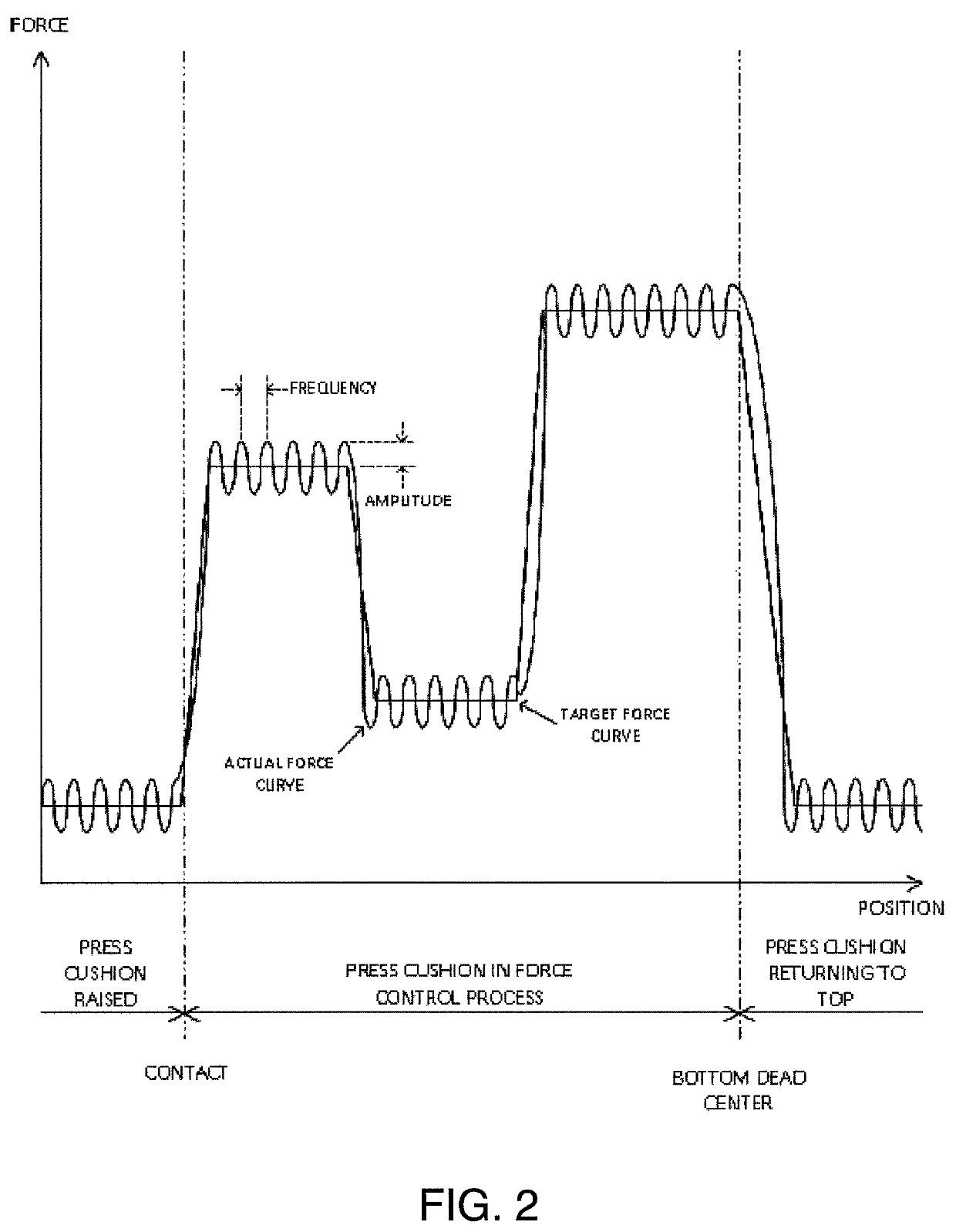Variable pulsating, gap control, auto-learning press cushion device
a technology of pulsating and pulsating force, applied in the field of variable puls, can solve the problems of failing to teach these two concepts together, and achieve the effect of improving the formation and drawing of sheet metal
- Summary
- Abstract
- Description
- Claims
- Application Information
AI Technical Summary
Benefits of technology
Problems solved by technology
Method used
Image
Examples
Embodiment Construction
[0063]An exemplary non-limiting embodiment of the present invention includes a variable pulsating, gap control, auto-learning press cushion device suitable for use in the formation of different sheet metal components typically used in the automotive industry. Although the variable pulsating gap control, auto-learning press cushion device of the present invention described herein is illustrated in an exemplary embodiment as being associated with sheet metal and automotive applications, the variable pulsating, gap control, auto-learning press cushion device can also be used for other or alternative materials and / or other commercial and recreational applications.
[0064]The variable pulsating, gap control, auto-learning press cushion device of the present invention can be incorporated into a wide range of press makes and models and can also be adaptable to many pre-existing and future die press systems where force control is desired. Press cushions can optionally be sized according to th...
PUM
| Property | Measurement | Unit |
|---|---|---|
| force | aaaaa | aaaaa |
| pressure | aaaaa | aaaaa |
| thickness | aaaaa | aaaaa |
Abstract
Description
Claims
Application Information
 Login to View More
Login to View More - R&D
- Intellectual Property
- Life Sciences
- Materials
- Tech Scout
- Unparalleled Data Quality
- Higher Quality Content
- 60% Fewer Hallucinations
Browse by: Latest US Patents, China's latest patents, Technical Efficacy Thesaurus, Application Domain, Technology Topic, Popular Technical Reports.
© 2025 PatSnap. All rights reserved.Legal|Privacy policy|Modern Slavery Act Transparency Statement|Sitemap|About US| Contact US: help@patsnap.com



